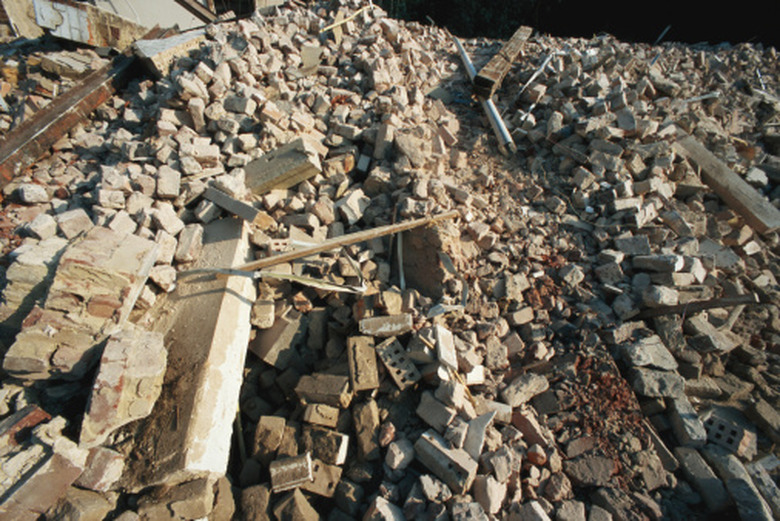Stages Of An Earthquake
Earthquakes, or tremors, occur when a rapid release of energy beneath the surface of the Earth creates a seismic wave. Earthquakes cause the ground to shake and can trigger tsunamis, landslides, fires, volcanoes and other major disasters. The five stages of an earthquake are based on the elastic rebound theory, which geologist Henry Fielding Reid devised after the great 1906 San Francisco earthquake.
Elastic Buildup
Elastic Buildup
The elastic rebound theory is based on the concept that the earthquakes result from forces nowhere near the actual earthquake. The first stage of an earthquake is the gradual buildup of elastic strain, which occurs over thousands of years. When both sides of the fault move, the elastic strain builds up in the rocks slowly, compressing the rock particles together.
Dilatancy
Dilatancy
Stage two occurs when the rocks in the Earth are packed together as closely as possible. The rocks must then expand by way of cracking to increase the amount of space they occupy. This process is called dilatancy. As small cracks form, the water inside the pores of the rocks is forced out and air is let in. As a result, the rocks become stronger. The process allows the rocks to hold even more elastic strain.
Influx of Water
Influx of Water
Stage three occurs when the water that has seeped out of the rocks is forced back in because of surrounding pressure, similar to the way water fills a hole in sand. As the water is forced back in, the rock loses its strength. The rocks are significantly strained by this. The influx of water keeps more cracks from forming, which causes the rocks to stop expanding. The water later eventually serves as a lubricant when the elastic strain that has been building up over time is released.
Earthquake
Earthquake
Stage four is the actual earthquake. Because the rocks can no longer resist the elastic strain, a sudden fault rupture occurs. The stored energy in the rocks is now forced out and released in the form of heat and seismic waves. Seismic waves are large waves of energy that flow outward through the Earth's crust, like ripples in a pond. The waves cause a sudden, often violent shaking of the ground.
Aftershocks
Aftershocks
Stage five is the final stage during which a sudden drop in stress causes small aftershocks, which are smaller earthquakes or ruptures. The aftershocks release the remaining elastic strain. Aftershocks are often unpredictable and can occur years after the initial earthquake. Depending on the size of the main earthquake, the size and frequency of aftershocks can be significant. Eventually the strain decreases, allowing normal conditions under the surface to return.
Cite This Article
MLA
Nicolet, Gabrielle. "Stages Of An Earthquake" sciencing.com, https://www.sciencing.com/stages-earthquake-8641550/. 24 April 2017.
APA
Nicolet, Gabrielle. (2017, April 24). Stages Of An Earthquake. sciencing.com. Retrieved from https://www.sciencing.com/stages-earthquake-8641550/
Chicago
Nicolet, Gabrielle. Stages Of An Earthquake last modified March 24, 2022. https://www.sciencing.com/stages-earthquake-8641550/
